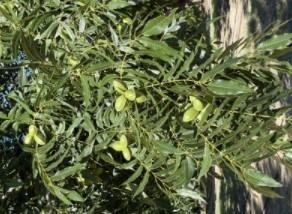By Dalene Hodnett
New Mexico’s diverse agriculture industry provides over $1.3 billion in dairy production by value; $102 million in onion production by value - 10% of the nation’s onion crop by value; $50 million in chili pepper production by value - 78% of the nation’s chili pepper crop by value; and numerous other crops and livestock products. As with the majority of the Mountain West, New Mexico has suffered from this season’s extensive drought. Ranchers are culling cattle and farmers are fallowing land to accommodate the lack of precipitation.

Pecan growers, though, have adapted particularly well in these conditions. New Mexico grows 35% of U.S. pecans. In fact, with over 32,000 acres of pecans, Doña Ana County, in the state’s southern region of the Mesilla Valley, is the nation’s largest pecan-producing county. It’s also a high-desert environment that has been plagued by significant dry years, so farmers have become adept at conserving precious water resources.